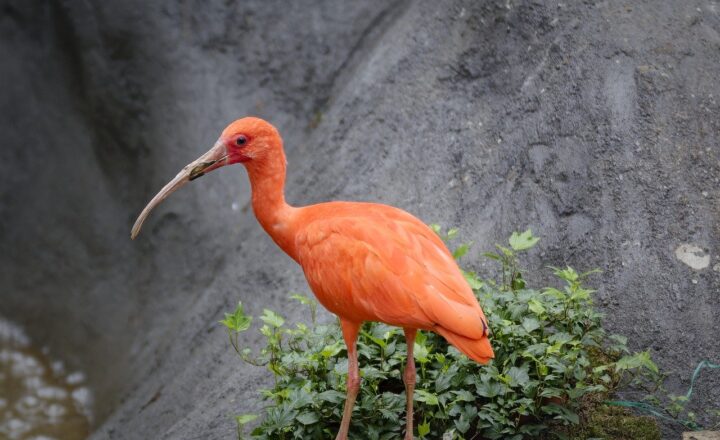The Impact of Ancient Animals on Modern Ecosystems: A Geological Perspective
November 15, 2024

The story of our planet is written in layers of rock and soil, a grand narrative that includes myriad organisms that once roamed the Earth, some of which still hold sway over the ecosystems we see today. By exploring the impact of ancient animals on modern ecosystems through a geological perspective, we can unveil how past biodiversity shapes our current environment, influencing everything from climate regulation to food webs.
1. The Evolutionary Legacy of Ancient Animals
The evolutionary processes that have taken place over millions of years have resulted in the rich diversity of life we experience today. Ancient animals—particularly those from the Paleozoic, Mesozoic, and Cenozoic eras—set in motion ecological dynamics that still resonate through the biophysical world.
Initially, the Cambrian Explosion, starting around 541 million years ago, witnessed the rapid diversification of marine life. Organisms such as trilobites and early cephalopods thrived, laying foundational roles in marine ecosystems. Their remains contributed to sedimentary layers, creating habitats for future species while influencing nutrient cycling in the ocean.
2. The Role of Dinosaurs in Shaping the Environment
Dinosaurs, which dominated the Mesozoic era for approximately 180 million years, left a profound impact on terrestrial ecosystems. Their immense sizes and varying diets influenced vegetation patterns and nutrient distribution in ecosystems. Herbivorous dinosaurs like the *Stegosaurus* and *Brachiosaurus* consumed massive quantities of plant material, which not only affected plant diversity but also promoted the growth of certain types of flora, including conifers and flowering plants.
Moreover, the roaming patterns of dinosaurs contributed to soil health and the dispersal of seeds and spores, ensuring a robust environment for the growth of diverse plant communities. This dynamic between ancient herbivores and vegetation exemplifies the delicate balance that persists within ecosystems today.
3. The Extinction Events and Their Ripple Effects
Throughout Earth’s history, major extinction events—like the Permian-Triassic extinction and the Cretaceous-Paleogene extinction—ushered in radical shifts in biodiversity that redefined ecosystems. The most famous of these is the extinction that wiped out the dinosaurs around 66 million years ago, leading to the rise of mammals and eventually, human beings.
These extinction events, often triggered by catastrophic geological changes (volcanic activity, meteor impacts), allowed new species to fill niches left vacant. The disappearance of dominant species often leads to an adaptive radiation of living organisms, shaping ecosystems in ways that we can still analyze geologically today. For example, the evolution of mammals in the wake of the dinosaur extinction illustrates a new chapter in the survival, adaptation, and influence of organisms on their environments.
4. Fossils as Indicators of Ecosystem Changes
Fossils are critical to understanding the historical dynamics of ecosystems, as they serve as records of ancient biodiversity and environmental conditions. Paleontologists analyze fossilized remains to interpret how ancient animals interacted with their environments and how changes in climate could have triggered evolutionary adaptations.
For instance, fossilized dung (coprolites) reveals not only the dietary habits of ancient animals but also their roles in nutrient cycling and ecosystem health. By studying isotopic ratios in fossils, scientists can glean insights into ancient climates, which correlate closely with patterns of evolution and extinction.
In modern contexts, understanding these historic patterns enables ecologists to predict how current species might respond to ongoing climate changes, offering invaluable data for conservation efforts.
5. Ancient Marine Life and Current Ocean Health
The influence of ancient animals extends beyond terrestrial ecosystems into the oceans. The evolution of coral reefs began hundreds of millions of years ago, with ancient corals paving the way for today’s vibrant reef systems that support vast amounts of marine biodiversity.
Modern reefs are built atop the skeletal remains of ancient corals, showcasing a lineage that has persisted through geological time. The health of these reefs, however, is under increasing threat due to ocean acidification, rising sea temperatures, and coral bleaching—a situation reflecting an urgent need to study and preserve the legacy of ancient marine life.
Understanding the resilience and vulnerabilities of these ancient platforms provides crucial insights for preserving current and future marine ecosystems.
6. Human Impacts and the Anthropocene Era
Currently, we are living through the Anthropocene—a geological epoch characterized by the significant impact of human activity on the Earth’s geology and ecosystems. The fossil record of ancient animals informs us of the consequences of biodiversity loss and habitat degradation, urging urgency in current conservation efforts.
Many species face threats comparable to those of past extinction events, primarily due to habitat destruction, pollution, and climate change. Understanding ancient ecosystems’ responses to change helps predict the trajectories of current species and ecosystems, guiding conservation strategies that could mitigate biodiversity loss.
Conclusion: A Geological Perspective for Modern Conservation
The interplay between ancient animals and modern ecosystems provides an invaluable lens through which to view our current biodiversity crises. Each layer of geological history reveals a complex web of interactions that shaped life on Earth, underscoring the importance of conservation in preserving both living organisms and their ancestral legacies.
By recognizing the profound influence of the past, we can foster a greater appreciation for the biodiversity present today and work towards sustainable practices that honor the ecosystems we inherit from our ancient predecessors. In doing so, we remain vigilant in the face of contemporary challenges and committed to a resilient future for our planet’s diverse life forms.







